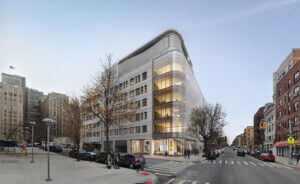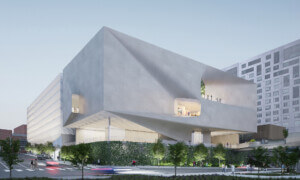We almost had it all. For one fleeting interval in the early 1930s, Columbia University entertained the idea of building an enormous skyscraper smack in the middle of its Charles McKim–designed campus in Morningside Heights, Manhattan. As documented in Barry Bergdoll’s Mastering McKim’s Plan, the scheme would have called for a looming steel-frame tower in a deco-ized version of the same neoclassical style as Low Library, the domed masterpiece to which the high-rise would have served as a dramatic backdrop. Better still, in one proposal from William Boring, dean of the architecture school, the addition was to have been constructed directly atop University Hall, a never-completed McKim project that would act as a grand base onto which successive floors could be added in stages. As the institution grew, the new building might have grown with it, ascending year by year into the heavens.
What did we get instead? In 1964, on the very site that could have been academia’s answer to the Chrysler Building (or better: a Beaux Arts answer to Pitt’s Cathedral of Learning), the university erected Uris Hall, a building whose name could be called Dickensian if doing so were not unfair to Dickens’s own Uriah Heap. It’s that bad—a concrete, tin-trimmed cash register, appropriate only to the degree that it was built to be the home of the Columbia Business School (CBS), which it has remained ever since. Its construction was a calamity in more ways than one, blotting out the biggest square in the McKim grid while also displacing the grand athletic facility that was meant to go there. The administration would go on to claim (falsely) that it had to put the school’s new gym in neighboring Morningside Park, touching off the massive student protests of 1968 and all their lamentable sequiturs.
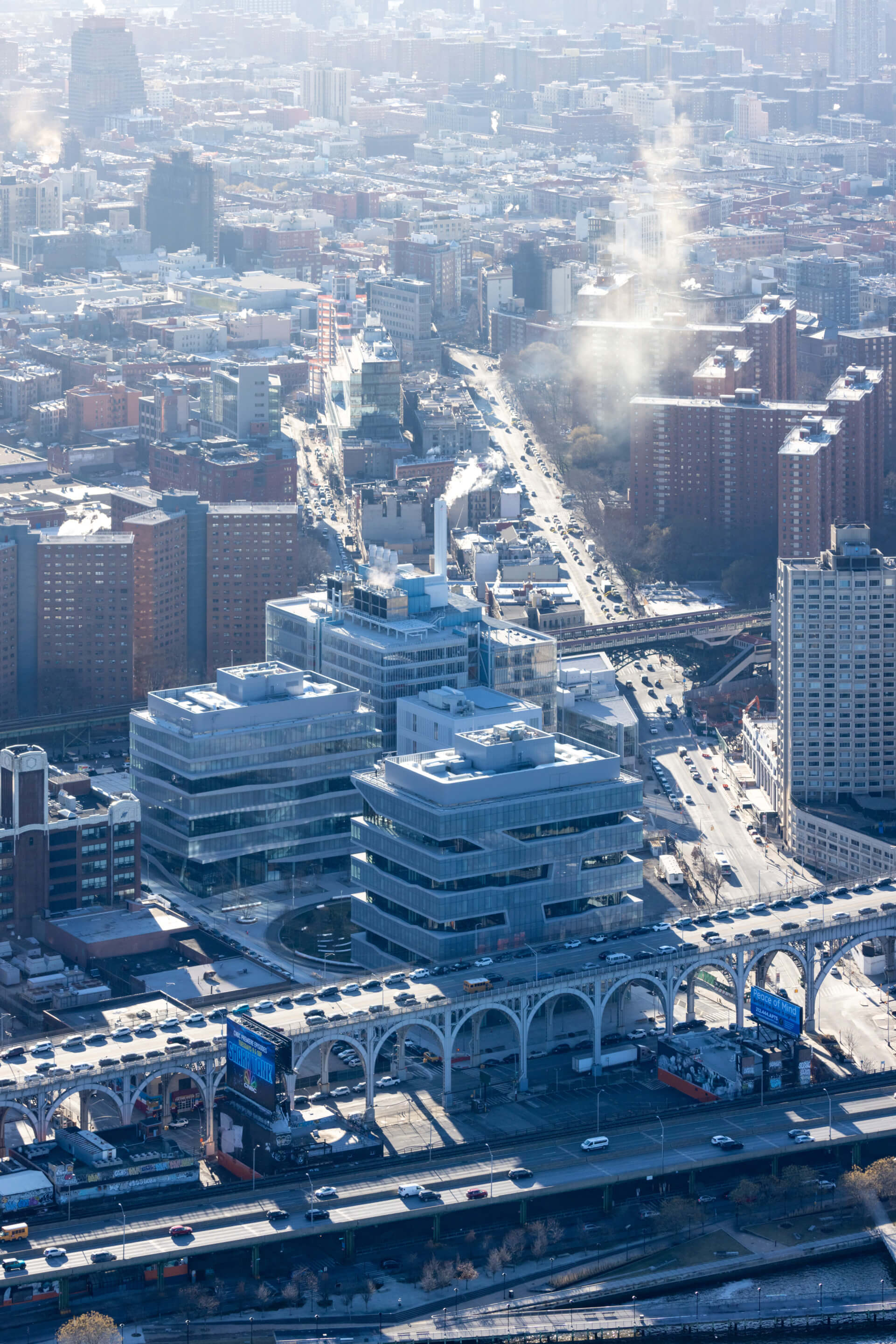
But that’s in the past—supposedly. Columbia has just finished a new home for its business school, located on an entirely new campus, the Renzo Piano–designed satellite in nearby Manhattanville. Designed by Diller Scofidio + Renfro (DS+R), working alongside FXCollaborative and with a landscape scheme from James Corner, the facility is in fact two buildings, David Geffen Hall and Henry R. Kravis Hall, the latter named for the billionaire financier who underwrote most of the project. “Originally it was going to be just one building,” noted FX’s Sylvia Smith on a recent visit: Apparently, while reviewing Piano’s master plan with university administrators, Kravis noted the pair of volumes next to the smaller, wedge-shaped parcel that had originally been intended for CBS. He took a shine to the twofer and kicked in $100 million to make it happen.
Linked via an underground service passage, the structures do in fact operate as a fairly harmonious duo, with a loop-shaped patch of lawn in the middle acting as the main route from one to the next. “We’ve always been interested in blurring the lines between social spaces, learning spaces, faculty spaces,” said Charles Renfro, who served as project leader for DS+R. As with the park–cum–circulatory plaza, the architects took the whole double-site scheme as an opportunity to create a series of connections, opportunities to mix and mingle various parts of the program within and between them. In each building, prominently featured staircases zigzag down the facade past glass-enclosed reading rooms, with offices abutting outdoor terraces abutting foosball-equipped rec rooms. The compressed, overlapping spatial logic of the interior finds expression in both structures’ wedding cake–like envelopes, with floor plates slipping out in jagged layers and popping projections. For all their similarities, the two also complement each other in a gratifying, rhyming sort of way—Geffen the smoother and more sedate, its pendant more muscular. “This one’s Michelangelo,” said Smith, pointing at Kravis. “The other is Borromini.”
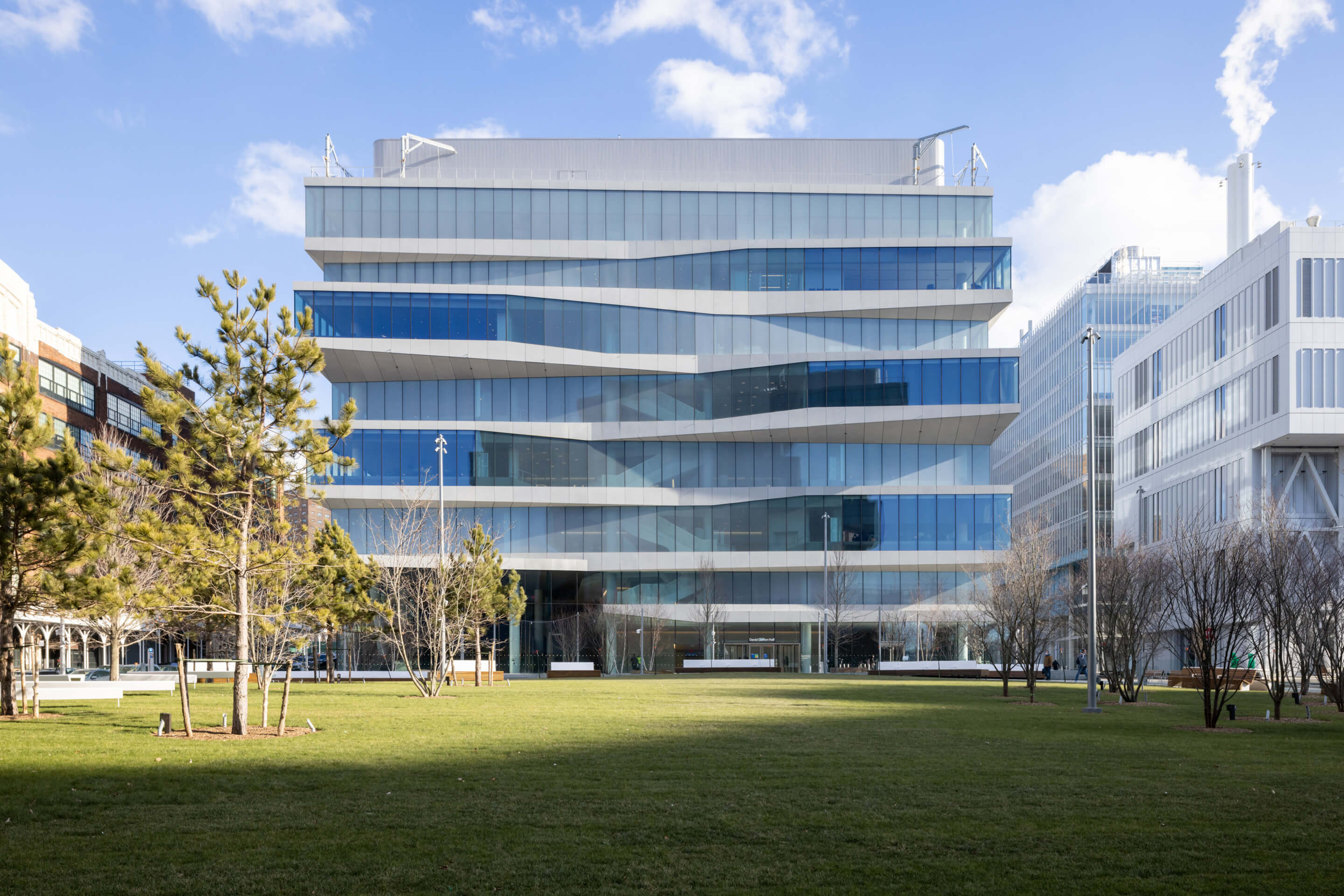
While they may or may not measure up to the masters, there’s no question that the pair of buildings represent a step up for CBS and one that betokens a larger shift. The program’s leadership has made plain in recent years its intention to run the business school in a way that is not simply business as usual, turning out “builders of enterprises that create value for their stakeholders and society,” as its mission statement puts it. Inclusion, community, and social entrepreneurship are now regular staples in the institution’s literature and in its curriculum—as they are in the new buildings, where on the same visit multiple meetings and lunches were underway for South Asian, African American, and female students and visiting executives. Banishing the dreary, double-loaded corridors of Uris, the school is evidently looking to banish the dreary double-loaded businessman of yesteryear, inaugurating a new era of purpose-driven profit (or perhaps the other way around). The pivot is especially meaningful given the new school’s location, with CBS and indeed the whole Manhattanville development located at the westernmost edge of Harlem, right in the middle of a former industrial zone in a marginalized, low-income community. All that transparency and shared green space, all that blending of townish and gownish functions—all of it is aimed at announcing the new role of the university as an integral part of the city and the world.
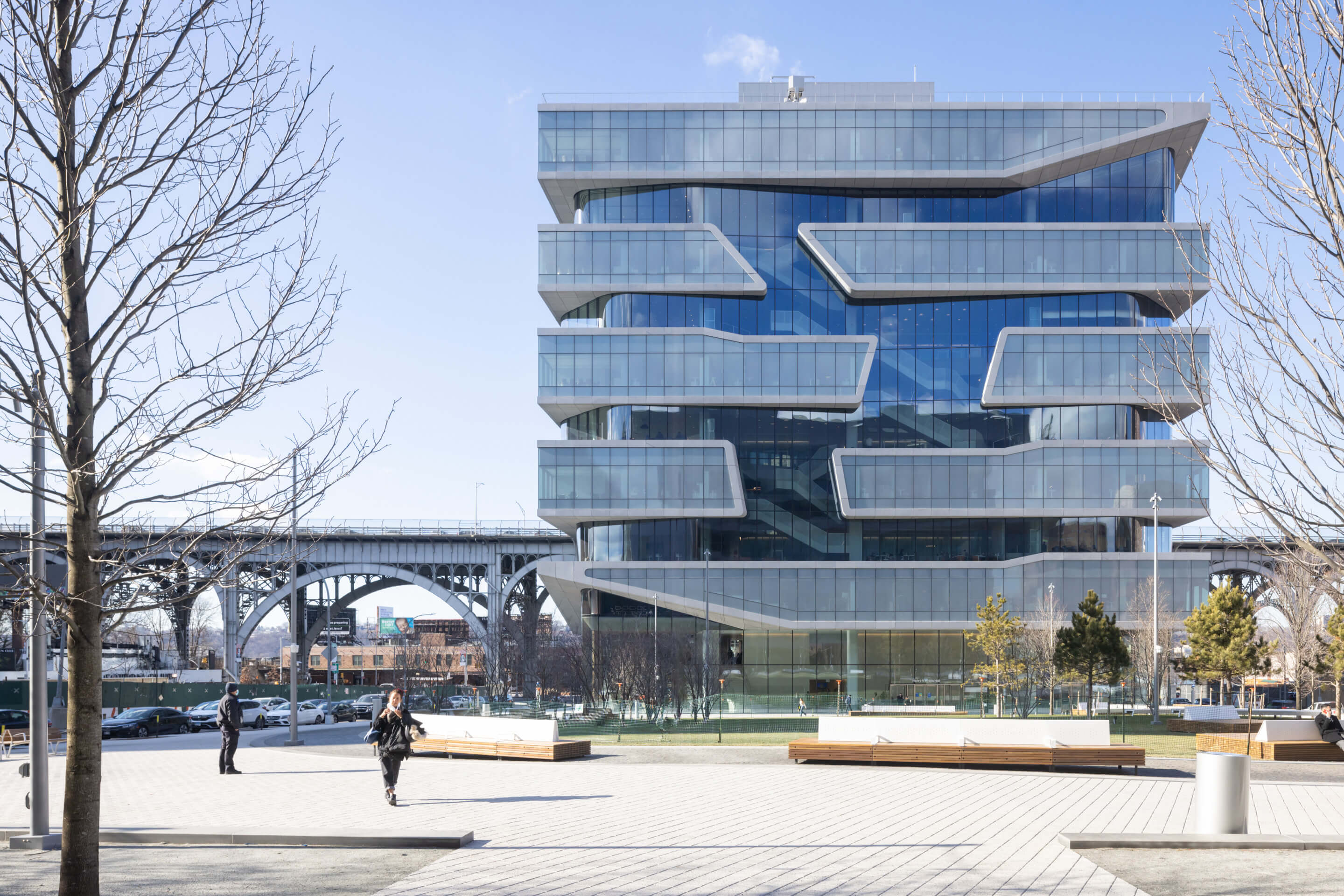
Again, a step up, maybe—but on a metaphoric staircase no less tricky and winding than the ones in Kravis and Geffen. Renzo’s first building for the Manhattanville campus, the Jerome L. Greene Science Center, declared the political and economic intention of the whole undertaking. Clean and white and glassy, but with an enormous smokestack protruding from the roof, the building was a factory: Just like the factories that once packed the neighborhood, only instead of turning out Studebakers, this one would manufacture Knowledge. That vision of the postindustrial global future, conceived over 20 years ago when Columbia first began its push into Manhattanville, seems more than a little quaint at this point. With the completion of the new business school, one senses all too acutely the contradiction of a campus becoming more cogent and aesthetically appealing, even as the very businessy premise behind it—one of endless institutional growth—appears less and less sustainable.
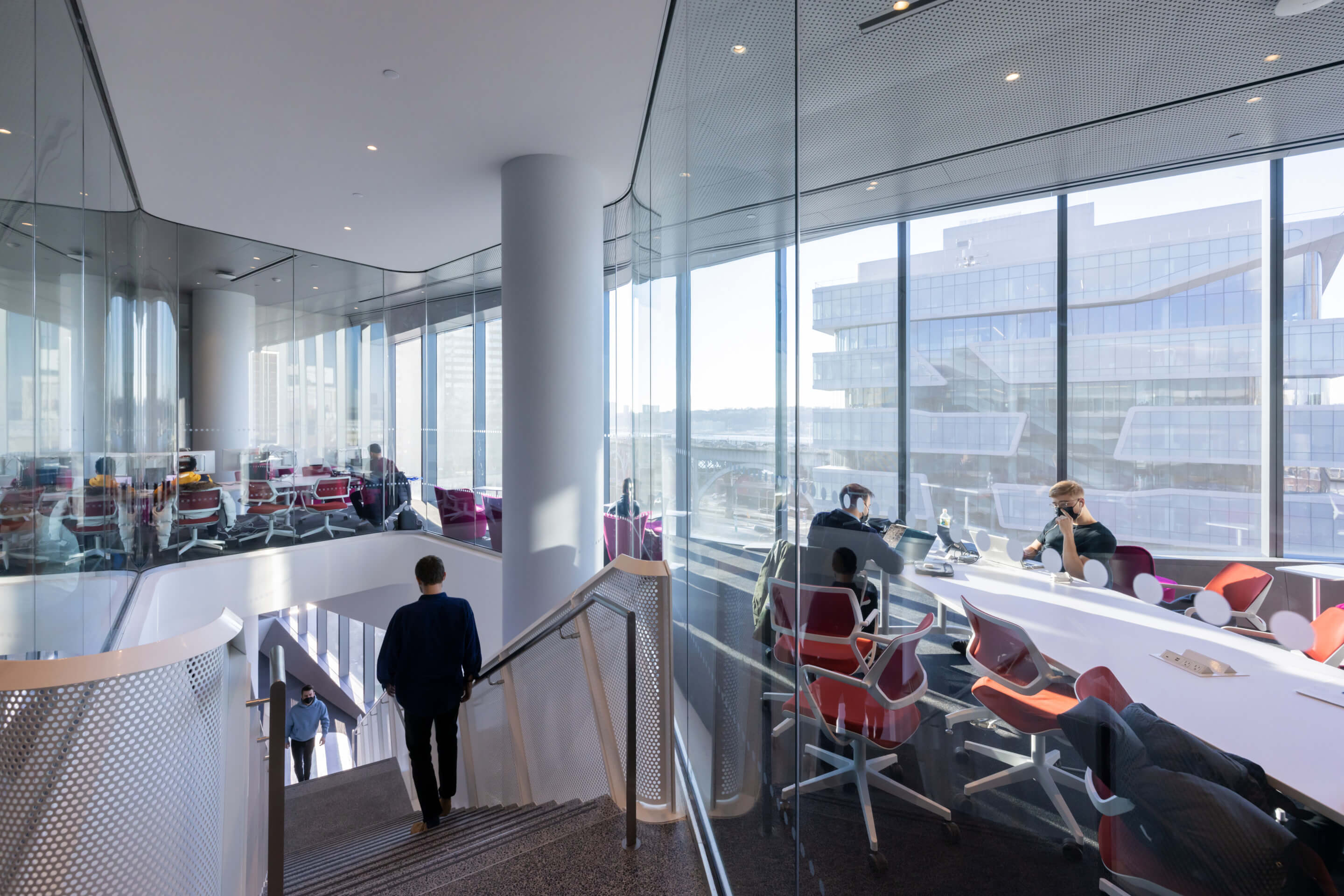
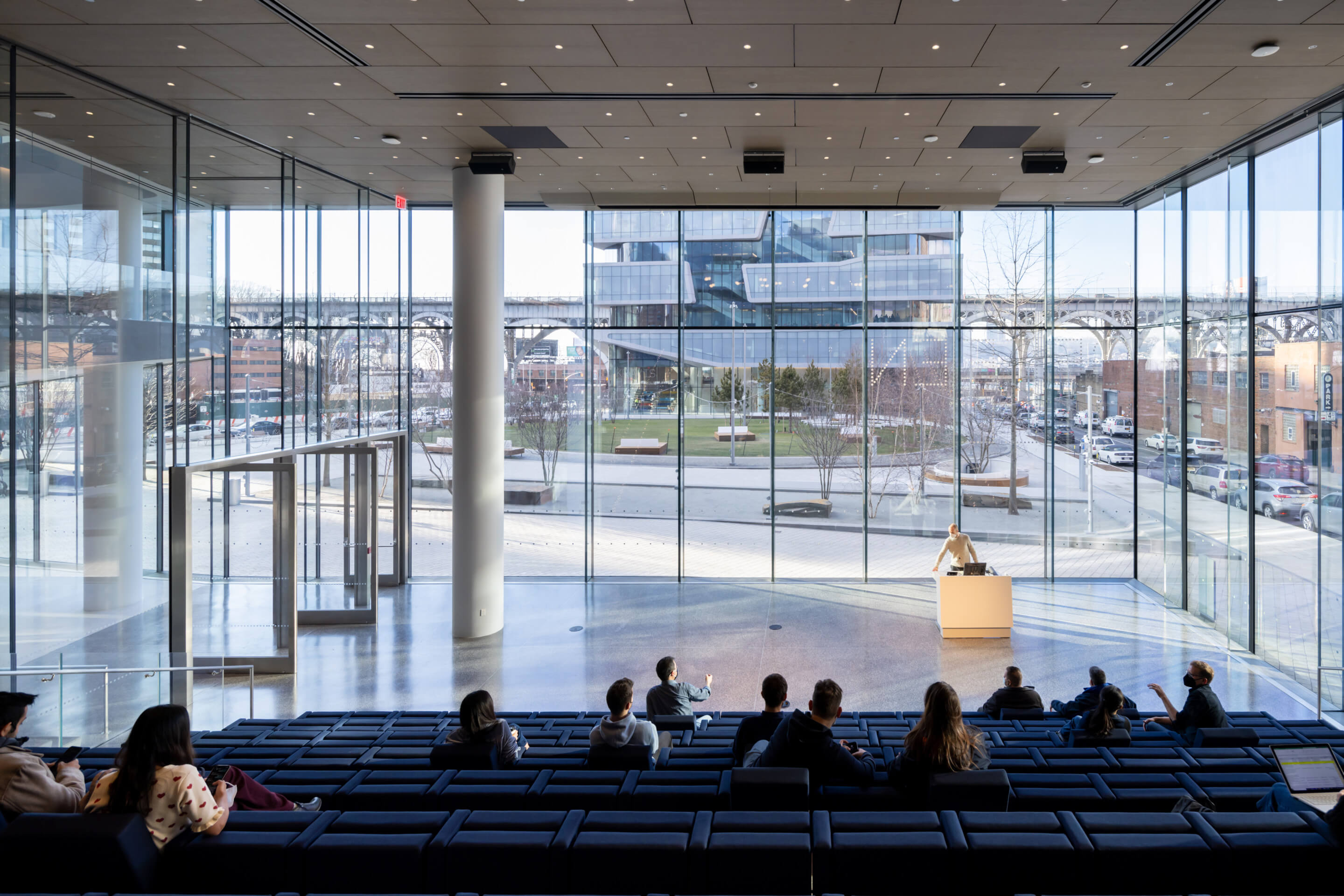
The challenges to that model seem to multiply daily. What of the demands of Columbia’s newly unionized graduate students? What of the scarce affordable housing stock likely to vanish as the expansion rolls on? And what, oh what of the poor Morningside campus, where the university has apparently decided to leave Uris almost entirely as is, making only modest changes to the interior to accommodate the humanities students (naturally) who are set to inhabit it. Until it does something about the mistake of 1964, Columbia may yet have to worry about another 1968.
Architects: Diller Scofidio + Renfro in collaboration with FXCollaborative
Location: Manhattan
Construction manager: Turner Construction
Exterior enclosure contractor: W&W Glass
Facade consultant: Arup
Glass: Sedak Glass, AGC Interpane Glass Germany, Cricursa Spain, Pilkington Glass
GFRG: IDA Exterior Systems and DKI/David Kucera Inc.
Ian Volner has contributed articles on architecture and urbanism to Harper’s, The New Yorker, The Wall Street Journal, and New York Magazine, among other publications. He is the author or coauthor of numerous books and monographs, most recently contributing to Jorge Pardo: Public Projects and Commissions, 1996–2018 (Petzel, 2021).








